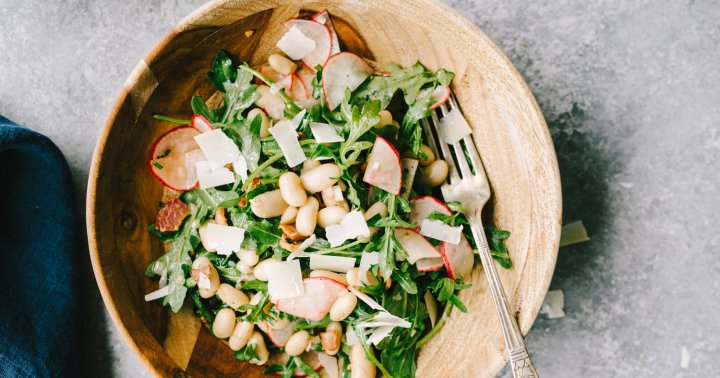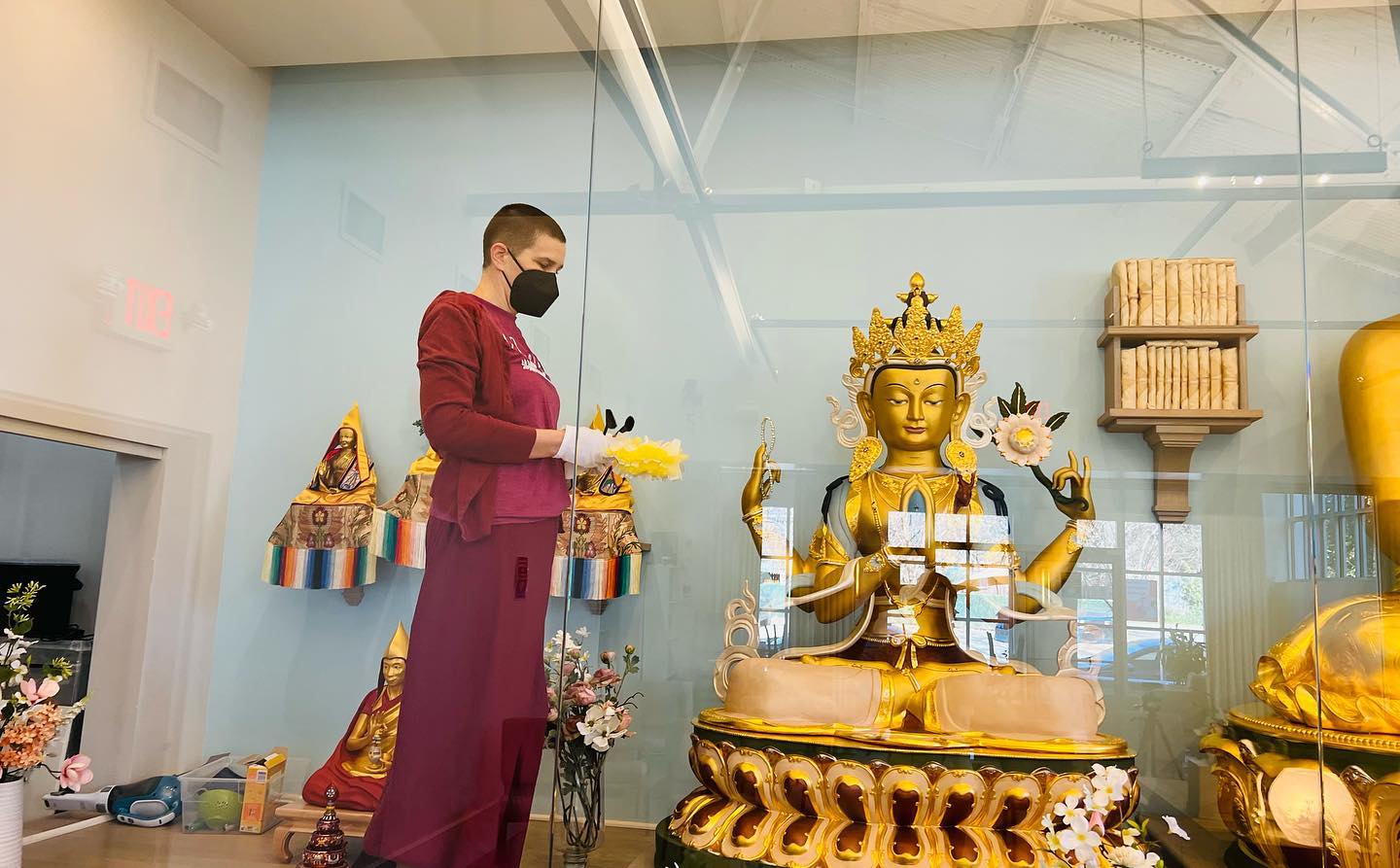Best of the Haiku Challenge (August 2024)
Announcing the winning poems from Tricycle’s monthly challenge The post Best of the Haiku Challenge (August 2024) appeared first on Tricycle: The Buddhist Review.

There is something serene about hydrangeas in full bloom. Their shadowy leaves and large, showy blossoms call the slowness of a summer afternoon to mind. A place of peace to rest the eyes, they rest the soul also. They will toss in a breeze if it is strong enough, and their florets will tremble visibly in the rain, but most of the time they are simply lovely—beautiful and still. The winning and honorable mention poems for last month’s challenge each explored this aspect of the hydrangea—a flower that seems to establish its own quiet world.
David Bolton’s world is large enough to embrace a financial crisis and the untroubled beauty of hydrangeas.Shelli Jankowski-Smith captures a moment of transcendent love in her image of hydrangeas “always reaching for blue sky.”
Sarah Mahina Calvello discovers a humorous contrast between the calmness of the hydrangeas and the “jigsaw puzzle mess” of this life.
Congratulations to all! To read additional poems of merit from recent months, visit our Tricycle Haiku Challenge group on Facebook.
You can submit a haiku for the current challenge here.
WINNER:
three jobs, credit maxed,
bills due, and the hydrangeas
are lovely today
— David Bolton
In the early 2000s, I gave a talk in California entitled “Nature Is a Moneyless Economy.” I was scheduled to speak on Japanese Buddhism, but the stock market had crashed the day before, and that was all anyone could think about. So I put on my haiku hat instead.
The point of the new talk was simple. Remove the bottom line from the natural world and it would remain unaffected. The rains would fall. The seasons would turn. The flowers would bloom as they had for millions of years. All without getting paid. From an ecological point of view, money was an illusion. “Eco”-entrepreneurs were just entrepreneurs.
I remembered that talk when I read last month’s winning poem on the season word “hydrangea.” Edgy, daring, darkly comical—Bolton’s haiku pares the substance of a ninety-minute talk down to its pithy core. But then it does something else.
Only rarely does the meaning of a modern free verse poem hinge on a single word. The meaning unfolds over the course of the poem, getting a slight twist at the end as the poet circles back to the main subject. In a haiku, the meaning must turn on a dime.
In this case, the pivot comes in that little word “and” right in the middle of the haiku. Had the poet said “but,” the result would have been completely different. The hydrangeas would be nothing more than a consolation for his economic woes—a bit of beauty to offset the agony of life under late-stage capitalism.
The poet offers a very different vision from that. In his haiku, the two worlds lie side by side. His finances are desperate . . . and the hydrangeas are serenely beautiful and at their full. There is a dissonance between the two worlds, but no distance. In fact, they may ultimately be the same.
I couldn’t help but think of a poem written in 1973 by Soen Nakagawa, one of the first Japanese Zen masters to teach in the West:
harvesting young herbs
within sight of Mt. Fuji—
that world, and this world
Soen selected the poem for inclusion in a monograph called “Ten Haiku of My Choice,” published that year and distributed to his friends. It includes the following note:
Fuji is represented by two characters that signify “wealthy person,” but in the ancient Japanese text Anthology of Ten Thousand Leaves it was represented by the ideograms “not two.” It has also been written fujin, meaning inexhaustible; also as fushi, meaning no death. This world is no other than that world; that world is no other than this world.
The same could be said of the two worlds portrayed in our winning haiku. At first reading, what comes through most strongly is the cultural satire. But the poem doesn’t leave us there. It leaves us with the hydrangeas. Both are true. And their truths are not in conflict. That world is its own world—and it is this world too.
HONORABLE MENTIONS:
hydrangea blossoms
always reaching for blue sky
become what they love
— Shelli Jankowski-Smith
This life seems to be
Quite a jigsaw puzzle mess
But calm hydrangeas
— Sarah Mahina Calvello
♦
You can find more on August’s season word, as well as relevant haiku tips, in last month’s challenge below:
Summer season word: “Hydrangea”
hydrangea blossom
nobody owns a sunbeam
but the place it falls
Submit as many haiku as you wish that include the season word “hydrangea.” Your poems must be written in three lines of 5, 7, and 5 syllables, respectively, and should focus on a single moment of time happening now.
Be straightforward in your description and try to limit your subject matter. Haiku are nearly always better when they don’t have too many ideas or images. So make your focus the season word* and try to stay close to that.
*REMEMBER: To qualify for the challenge, your haiku must be written in 5-7-5 syllables and include the words “hydrangea.”
Haiku Tip: Take the Imprint of the 5-7-5 Syllable Form!
I sometimes refer to haiku as a form of “found poetry.” But when I say that, I am not using the term in its usual context—to refer to poetry taken from billboards, product labels, newspaper headlines, or overheard conversations. A haiku can draw its inspiration from anywhere, including all of these. But that is not what I mean. The best haiku are found as naturally occurring “poetic objects” in that flow of inner conversation we refer to colloquially as “human thought.”
In Seeds From a Birch Tree: Writing Haiku and the Spiritual Journey, I wrote:
In the simplest form, writing haiku is closer to collecting shells than searching for the proper word. When you go to the shore to collect shells, you just walk along in a relaxed way, now and then stooping down to look at something interesting or beautiful. Sometimes you pick up a fragment for its shape or color, and sometimes a fully formed shell. If you take a daily haiku walk in this same spirit, soon you will find that haiku come all by themselves.
When I wrote those words almost thirty years ago, I was still in the throes of my conversion to “the sketch from life,” the photorealist style of haiku composition favored by Masaoka Shiki, the Japanese poet who revolutionized haiku in the late 19th and early 20th century, ensuring its survival into the modern age. Reading what I wrote today, however, I interpret it in a different way.
Just as the shell fragments are a metaphor for various images that can come together to create a fully formed 17-syllable poem, the shore is a metaphor for the borderline between waking consciousness and that vast reservoir of ancestral knowledge that we visit in dreams and access through imagination while making art or creating poetry.
The 5-7-5 syllable pattern is our point of access to that mother lode of meaning and creative inspiration. Our job as haiku poets is to become so devoted to that form that it literally “imprints” on our consciousness, laying down neural pathways that function continuously, playing with the various possibilities of spoken language throughout our waking hours, and even in our dreams.
Once we have taken the imprint of that form (and the only way to do that is to write lots and LOTS of haiku), we will experience “finding” haiku that seem to have already been written, because we have been working on them for some time without even realizing it.
A note on hydrangeas: Hydrangeas are ornamental shrubs with rounded or flattened heads of small florets that bloom through late summer in Asia and the Americas, where they are prized for their lush, showy beauty. The word (which is pronounced in three syllables: hy•dran•gea) comes from the Greek for “water vessel.” Although hydrangea flowers are mildly toxic if eaten, their roots and rhizomes are used in herbal medicine to treat urinary problems, and hydrangea tea, made from its leaves, is a popular drink in parts of Asia. Hydrangea flowers vary in hue from green to white to pink to blue and will often change color over the course of a growing season depending on the acidity of the soil.
A haiku by a modern Japanese poet:
hydrangea blossoms
Picasso’s Blue Period
is right here and now
– Sakura Shoji

 FrankLin
FrankLin 
































